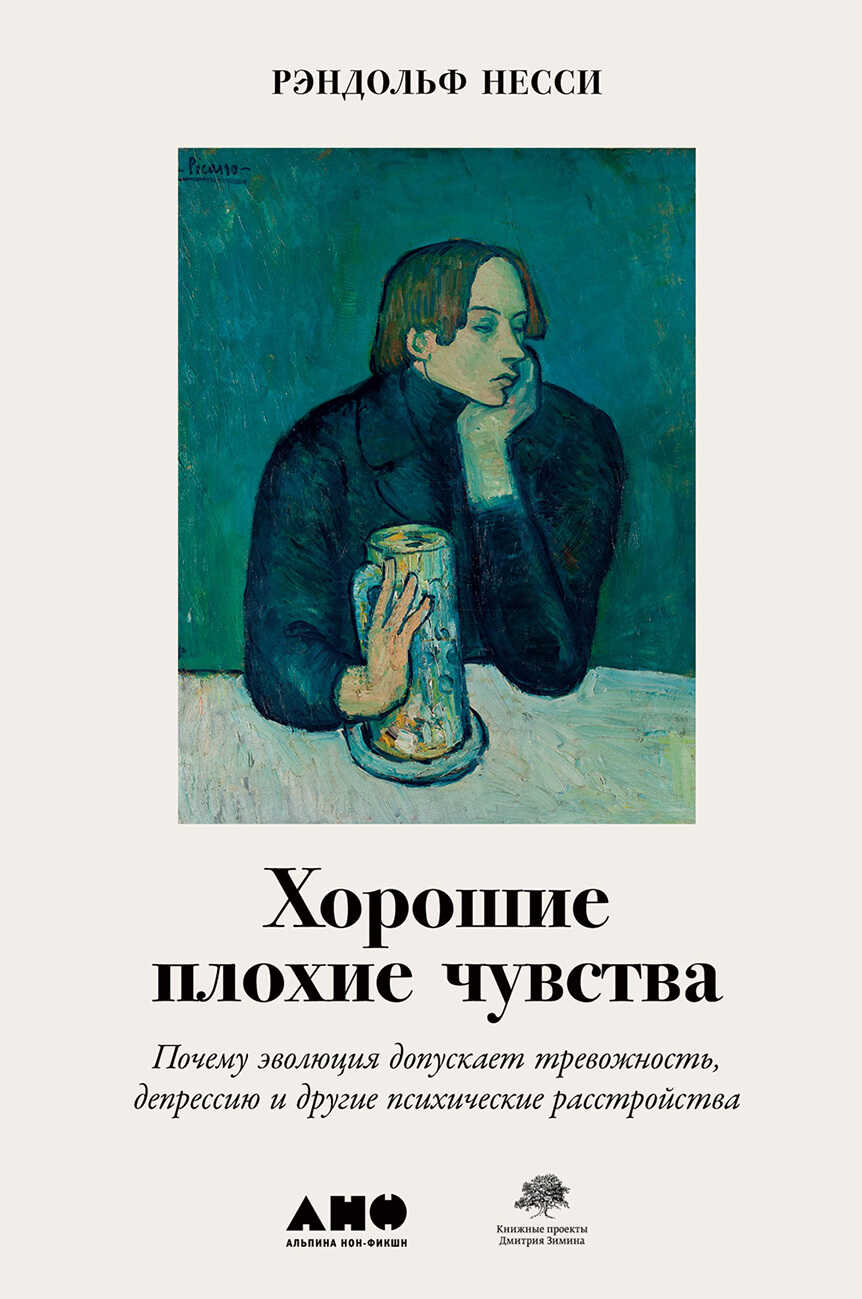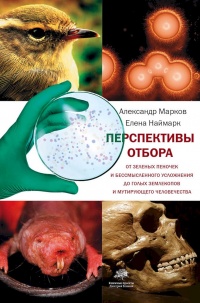Читать книгу - "Хорошие плохие чувства. Почему эволюция допускает тревожность, депрессию и другие психические расстройства - Рэндольф Несси"
Аннотация к книге "Хорошие плохие чувства. Почему эволюция допускает тревожность, депрессию и другие психические расстройства - Рэндольф Несси", которую можно читать онлайн бесплатно без регистрации
Психические расстройства – настоящий бич для нашего биологического вида. Но почему в человеческой жизни так много душевных страданий?Отчасти дело в том, что такие эмоциональные состояния, как тревожность, плохое настроение и скорбь, сохранялись и формировались в ходе естественного отбора, поскольку они полезны. Правда, до известного предела.Страх помогает нам избежать опасности – но ценой неизбежных ложных тревог. Уныние позволяет не тратить силы на погоню за несбыточным, но часто перерастает в патологическую депрессию. Другие психические расстройства, такие как наркотическая или алкогольная зависимость или анорексия, возникают из за несоответствия между древними настройками нашего организма и современной средой. Веские эволюционные основания имеются и у сексуальных расстройств, и у сохранения генов шизофрении.Опираясь на показательные случаи из собственной клинической практики и открытия эволюционной биологии, доктор Рэндольф Несси не только отвечает на вопрос, почему естественный отбор сформировал у человека такую хрупкую психику, но и пытается наметить пути к облегчению этих страданий с учетом личных обстоятельств и индивидуальных особенностей.
Didyoung J, Charles E, Rowland NJ. Non-theists are no less moral than theists: some preliminary results. Secularism & nonreligion [Internet]. 2013 Mar 2 [cited 2017 Dec 14]; 2. Available from: http://www.secularismandnonreligion.org/articles/abstract/10.5334/snr.ai.
512
Hofmann W, Wisneski DC, Brandt MJ, Skitka LJ. Morality in everyday life. Science. 2014 Sep 12; 345(6202): 1340-3.
513
Zuckerman P. Atheism, secularity, and well-being: how the findings of social science counter negative stereotypes and assumptions. Sociol Compass. 2009; 3(6): 949-71.
514
Williams GC. Huxley’s evolution and ethics in sociobiological perspective. Zygon. 1988; 23(4): 383-407.
515
Williams GC, Williams DC. Natural selection of individually harmful social adaptations among sibs with special reference to social insects. Evolution. 1957; 11: 249-53.
516
Paradis JG, Huxley TH, Williams GC. Evolution & ethics: T. H. Huxley’s evolution and ethics with new essays on its Victorian and sociobiological context. Princeton (NJ): Princeton University Press; 1989.
517
Wilson DS, Sober E. Reintroducing group selection to the human behavioral sciences. Behav Brain Sci. 1994; 17(4): 585-607.
518
Smith JM. Group selection and kin selection. Nature [Internet]. 1964 Mar [cited 2017 Dec 14];201(4924): 1145. Available from: https://www-nature-com.proxy.lib.umich.edu/articles/2011145a0.
519
West SA, Griffin AS, Gardner A. Social semantics: how useful has group selection been? J Evol Biol. 2008; 21(1): 374-85.
520
Pinker S. The false allure of group selection. Edge [Internet]. 2012 Jun 18. Available from: https://www.edge.org/conversation/steven_pinker-the-false-allure-of-group-selection.
521
Dugatkin LA, Reeve HK. Behavioral ecology and levels of selection: dissolving the group selection controversy. Adv Study Behav. 1994; 23: 101-33.
522
Reeve HK, Holldobler B. The emergence of a superorganism through intergroup competition. Proc Natl Acad Sci. 2007 Jun 5; 104(23): 9736-40.
523
West SA, Griffin AS, Gardner A. Social semantics.
524
Nowak MA, McAvoy A, Allen B, Wilson EO. The general form of Hamilton’s rule makes no predictions and cannot be tested empirically. Proc Natl Acad Sci. 2017 May 30; 114(22): 5665-70.
525
Nowak MA, Tarnita CE, Wilson EO. The evolution of eusociality. Nature. 2010; 466(7310): 1057-62.
526
Abbot P, Abe J, Alcock J, Alizon S, Alpedrinha JAC, Andersson M, et al. Inclusive fitness theory and eusociality. Nature. 2011 Mar; 471(7339): E1–E4.
527
Muir WM. Group selection for adaptation to multiple-hen cages: selection program and direct responses. Poult Sci. 1996 Apr; 75(4): 447-58.
528
Ortman LL, Craig JV. Social dominance in chickens modified by genetic selection – physiological mechanisms. Anim Behav. 1968 Feb; 16(1): 33-7.
529
Fisher RA. The genetical theory of natural selection: a complete variorum edition. New York: Oxford University Press; 1999.
530
Nesse RM. Five evolutionary principles for understanding cancer. In: Ujvari B, Roche B, Thomas F, editors. Ecology and evolution of cancer. New York: Academic Press; 2017, pp. xv – xxi.
531
Segerstrale U. Nature’s oracle: the life and work of D. Hamilton. New York: Oxford University Press; 2013.
532
Hamilton WD. The evolution of altruistic behavior. Am Nat. 1963 Sep 1; 97(896): 354-6.
533
Smith JM. Group selection and kin selection. Nature [Internet]. 1964 Mar [cited 2017 Dec 14];201(4924): 1145. Available from: https://www-nature-com.proxy.lib.umich.edu/articles/2011145a0.
534
Nowak MA et al. The general form of Hamilton’s rule makes no predictions and cannot be tested empirically.
535
West SA, El Mouden C, Gardner A. Sixteen common misconceptions about the evolution of cooperation in humans. Evol Hum Behav. 2011; 32(4): 231-62.
536
West SA, Griffin AS, Gardner A. Social semantics: altruism, cooperation, mutualism, strong reciprocity and group selection. J Evol Biol. 2007; 20(2): 415-32.
537
Bergstrom CT, Bronstein JL, Bshary R, Connor RC, Daly M, Frank SA, et al. Interspecific mutualism: puzzles and predictions. In: Hammerstein P, editor. Genetical and cultural evolution of cooperation. Cambrige (MA): MIT Press; 2003, pp. 241-56.
538
Clutton-Brock T. Breeding together: kin selection and mutualism in cooperative vertebrates. Science. 2002 Apr 5; 296(5565): 69-72.
539
Connor RC. The benefits of mutualism: a conceptual framework. Biol Rev. 1995; 70(3): 427-57.
540
Dugatkin LA. Cooperation among animals: an evolutionary perspective. New York: Oxford University Press; 1997.
541
Trivers RL. The evolution of reciprocal altruism. Q Rev Biol. 1971; 46(1): 35-57.
542
Axelrod R, Hamilton W. The evolution of cooperation. Science. 1981; 211: 1390-6.
543
Axelrod RM. The evolution of cooperation. New York: Basic Books; 1984.
544
Axelrod R, Dion D. The further evolution of cooperation. Science. 1988; 242: 1385-90.
545
Mengel F. Risk and temptation: a meta-study on prisoner’s dilemma games. Econ J. 2017 Sep 18.
546
Pepper JW, Smuts BB. The evolution of cooperation in an ecological context: an agent-based model. In: Kohler TA, Gumerman GJ, editors. Dynamics of human and primate societies: agent-based modelling of social and spatial processes. New York: Oxford University Press; 1999, pp. 44-76.
547
Nesse RM. Evolutionary explanations of emotions.
548
Nesse RM. Evolutionary explanations of emotions. Hum Nat. 1990; 1(3): 261-89.
549
Forgas JP, editor. Affect in social thinking
Прочитали книгу? Предлагаем вам поделится своим впечатлением! Ваш отзыв будет полезен читателям, которые еще только собираются познакомиться с произведением.
Оставить комментарий
-
 Вера Попова27 октябрь 01:40
Любовь у всех своя-разная,но всегда это слово ассоциируется с радостью,нежностью и счастьем!!! Всем добра!Автору СПАСИБО за добрую историю!
Любовь приходит в сентябре - Ника Крылатая
Вера Попова27 октябрь 01:40
Любовь у всех своя-разная,но всегда это слово ассоциируется с радостью,нежностью и счастьем!!! Всем добра!Автору СПАСИБО за добрую историю!
Любовь приходит в сентябре - Ника Крылатая
-
 Вера Попова10 октябрь 15:04
Захватывает,понравилось, позитивно, рекомендую!Спасибо автору за хорошую историю!
Подарочек - Салма Кальк
Вера Попова10 октябрь 15:04
Захватывает,понравилось, позитивно, рекомендую!Спасибо автору за хорошую историю!
Подарочек - Салма Кальк
-
 Лиза04 октябрь 09:48
Роман просто супер давайте продолжение пожалуйста прочитаю обязательно Плакала я только когда Полина искала собаку Димы барса ♥️ Пожалуйста умаляю давайте еще !))
По осколкам твоего сердца - Анна Джейн
Лиза04 октябрь 09:48
Роман просто супер давайте продолжение пожалуйста прочитаю обязательно Плакала я только когда Полина искала собаку Димы барса ♥️ Пожалуйста умаляю давайте еще !))
По осколкам твоего сердца - Анна Джейн
-
 yokoo18 сентябрь 09:09
это прекрасный дарк роман!^^ очень нравится
#НенавистьЛюбовь. Книга вторая - Анна Джейн
yokoo18 сентябрь 09:09
это прекрасный дарк роман!^^ очень нравится
#НенавистьЛюбовь. Книга вторая - Анна Джейн





